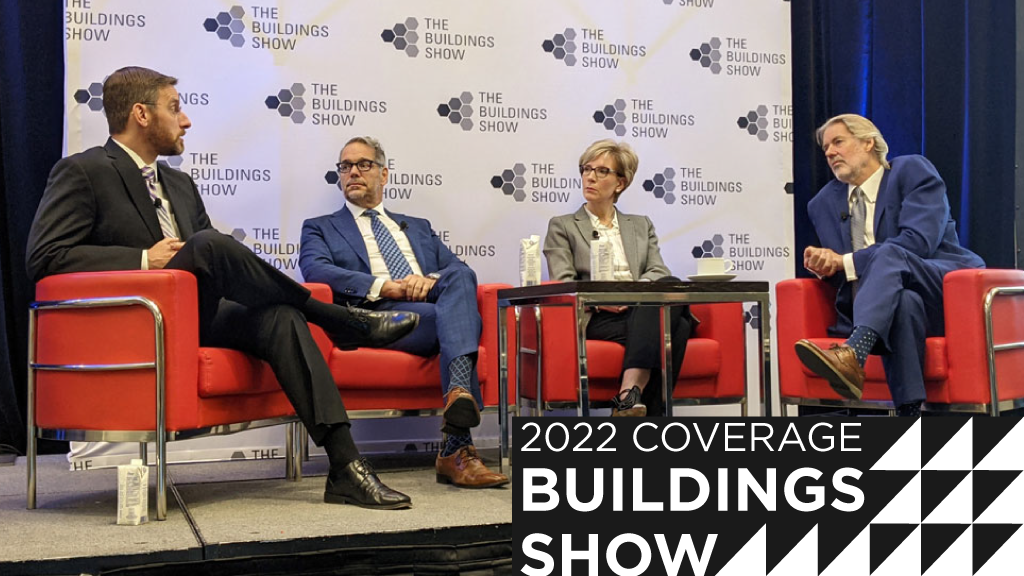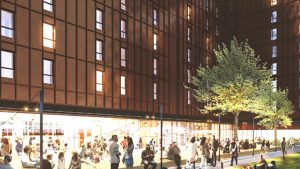Panellists at the CEO Breakfast agreed uncertainty is creating a number of challenges in the construction industry and although they are unsure of what the future may hold, right now they are seeing construction costs going up and the viability of certain projects in question.
During the Economic Outlook and Construction Industry Challenges in a Post-COVID World panel at The Buildings Show in Toronto Dec. 1, Jeff Murva, president, J. Murva Consulting said last year there was a 12 per cent cost escalation on projects and prices continue to rise.
“If you were to survey 10 owners, probably eight of them think prices are coming down let’s hold off until the spring to start making our commitments,” he explained. “I’m one of these, as I call them, disruptors going prices are going up.”
There is hesitation right now in the multi-family market, Murva added.
“There have been very few launches since spring,” he explained. “Many of my clients are doing a let’s wait and see, anticipating that perhaps the purchasers of condo units will become comfortable with the new normalized interest rates and then they will be comfortable to move forward. Certainly, then there is also the comfort level of the lenders who enable these purchases. Right now, the market is stalled on the revenue side of the equation.”
Monique Buckberger, vice-president and district manager with PCL Constructors Canada, said that’s only one side of the equation.
“The other side of the equation is construction costs and schedule. The uncertainty on that side of the equation is very real,” she said. “There is a bit of market hesitancy, particularly in the private sector. In combination with interest rate hikes and uncertainty in construction costs, it certainly makes it challenging for clients to commit to new work, new projects.”
Buckberger said costs may not go up as dramatically as seen in the past year.
“We haven’t seen a slide back down to anything pre-pandemic for sure or even a negative decline in construction costs and it’s for a variety of reasons,” she noted. “We were talking about supply chain. We’re assuming that the products are actually in hand in some plant somewhere around the globe. A lot of our challenge is they haven’t even been made yet.”
“In some parts of our construction costs there have been some adjustments,” Murva added. “Some of them have been emotional for fear of what the future may bring, but overall prices are still going up.”
When asked if material prices will go up or come down, ConstructConnect senior economist Michael Guckes said copper is a pretty good leading indicator of where prices are going.
“We are seeing steep declines in copper,” he pointed out. “If you go back and look at copper prices over the last 15, 20 years, when it does have a significant correction the rest of that commodities group, the construction products…it follows suit.”
Moderator John Mollenhauer, president and CEO of the Toronto Construction Association, asked the panellists about the conversations they’re having before awarding a contract.
“(They) are about supply chain, what is longest delivery and pre-pandemic those weren’t questions that we typically would ask,” said Buckberger. “Now they are being asked on every trade scope and we’re getting into trade contractors’ kitchens as far as what their supply chain is and what their long lead items are because they are so impactful on the overall project.”
Murva said they prequalify trades and ensure they have the capacity and good financial standing before they invite them to bid.
“Once the bid comes in then we are going right through to supply chain issues, schedule, how does that co-ordinate with their other commitments,” he said.
“There is a lot more scrutiny and frank, transparent conversation that’s required at the subtrade level before an award is done because there is so much more additional risk that we have to manage that we didn’t really have to concern ourselves back in 2017, 2018.”
Getting labour and project managers to work on projects in Toronto and across the GTA has also been a challenge, said Murva, because there is too much demand and not enough supply. Costs like parking, gas and time all play a role and getting workers to travel to regions they don’t live in to work is becoming increasingly difficult.
So what does the economic landscape look like as we begin to recover from the pandemic?
“When we look at that data across Canada, 2022 really will be the worst part of that for the non-residential part…residential will be slow to recover so it will continue to struggle in 2023,” said Guckes. “In 2023 I think we’ll see some good rebound in those civil and non-res sectors.
“Like in so many recessions, the landscape is very uneven and it really takes a group like this with the awareness to say. ‘I need to think smarter not just work harder to come out of this,’” Guckes added.
Follow the author on Twitter @DCN_Angela.











Recent Comments
comments for this post are closed